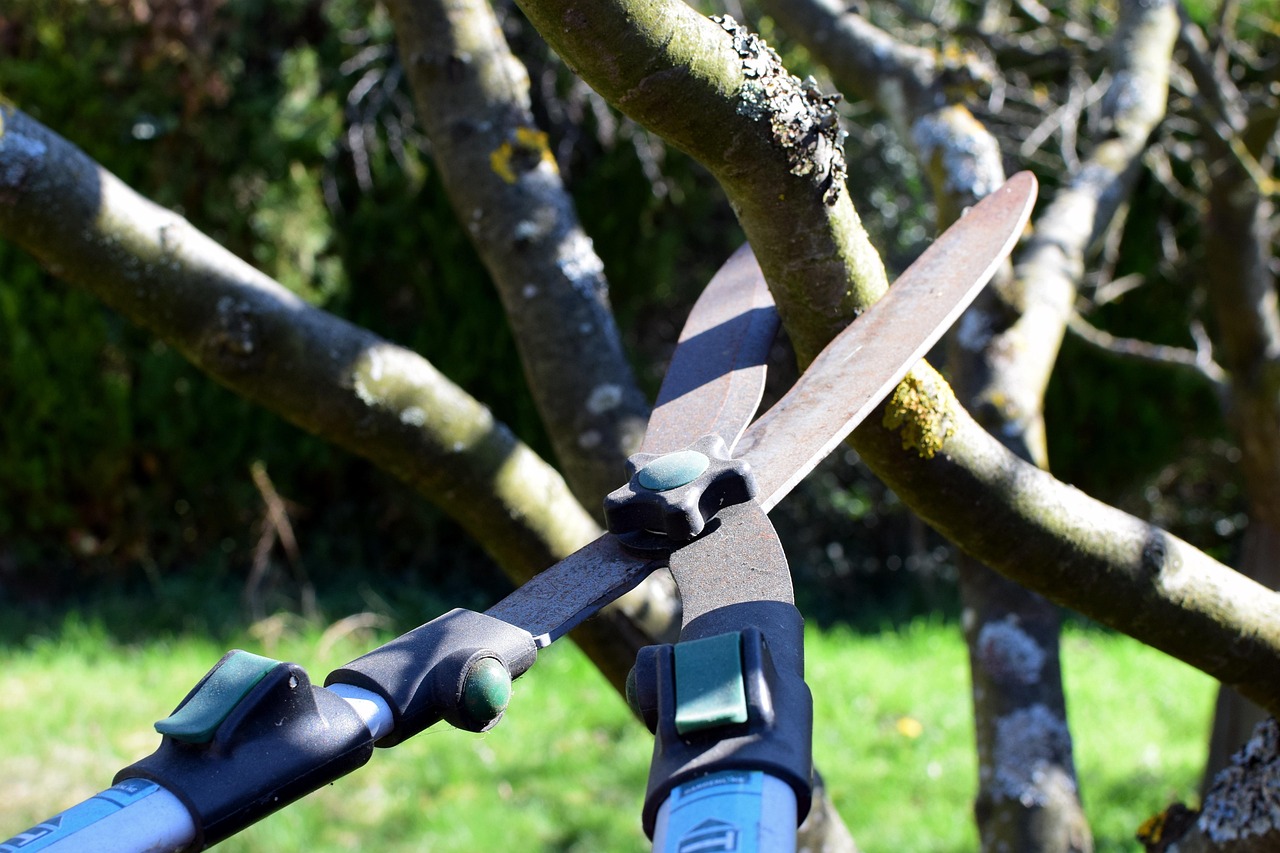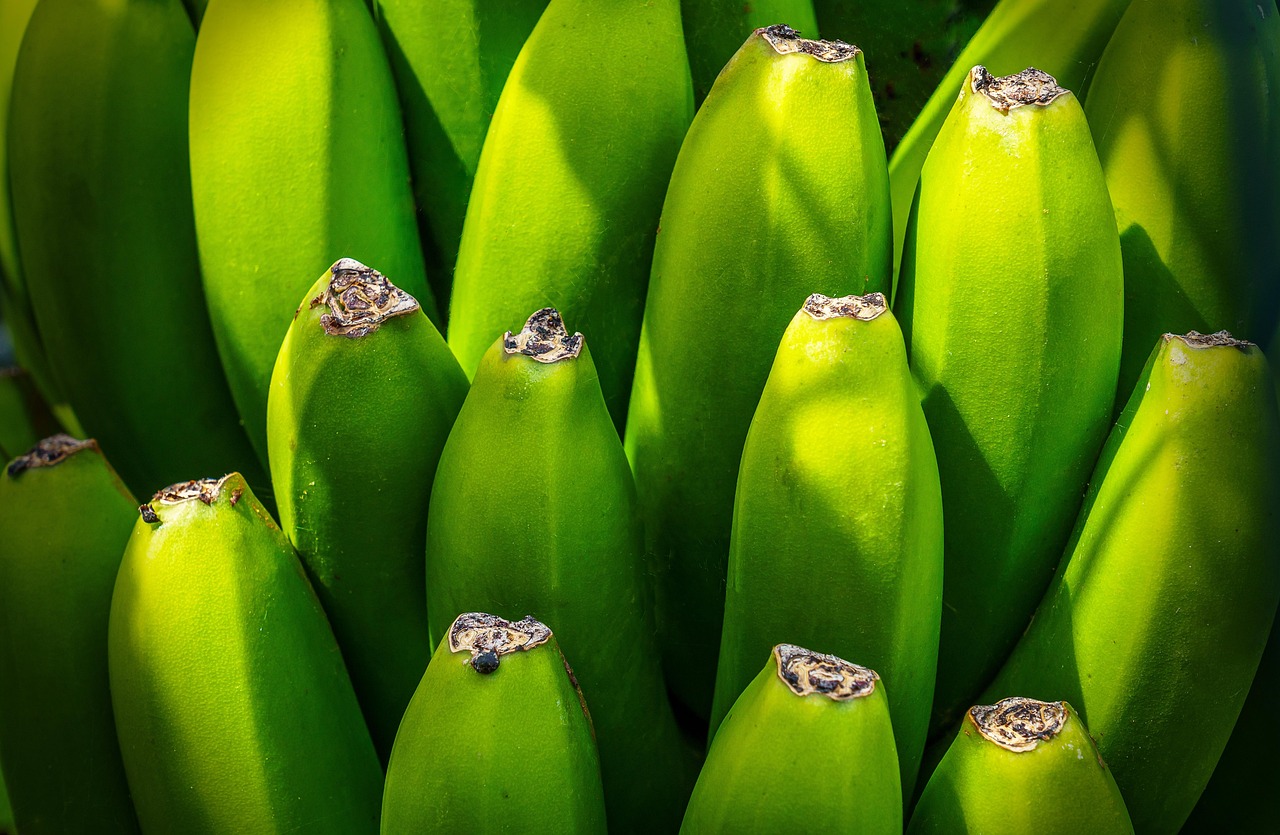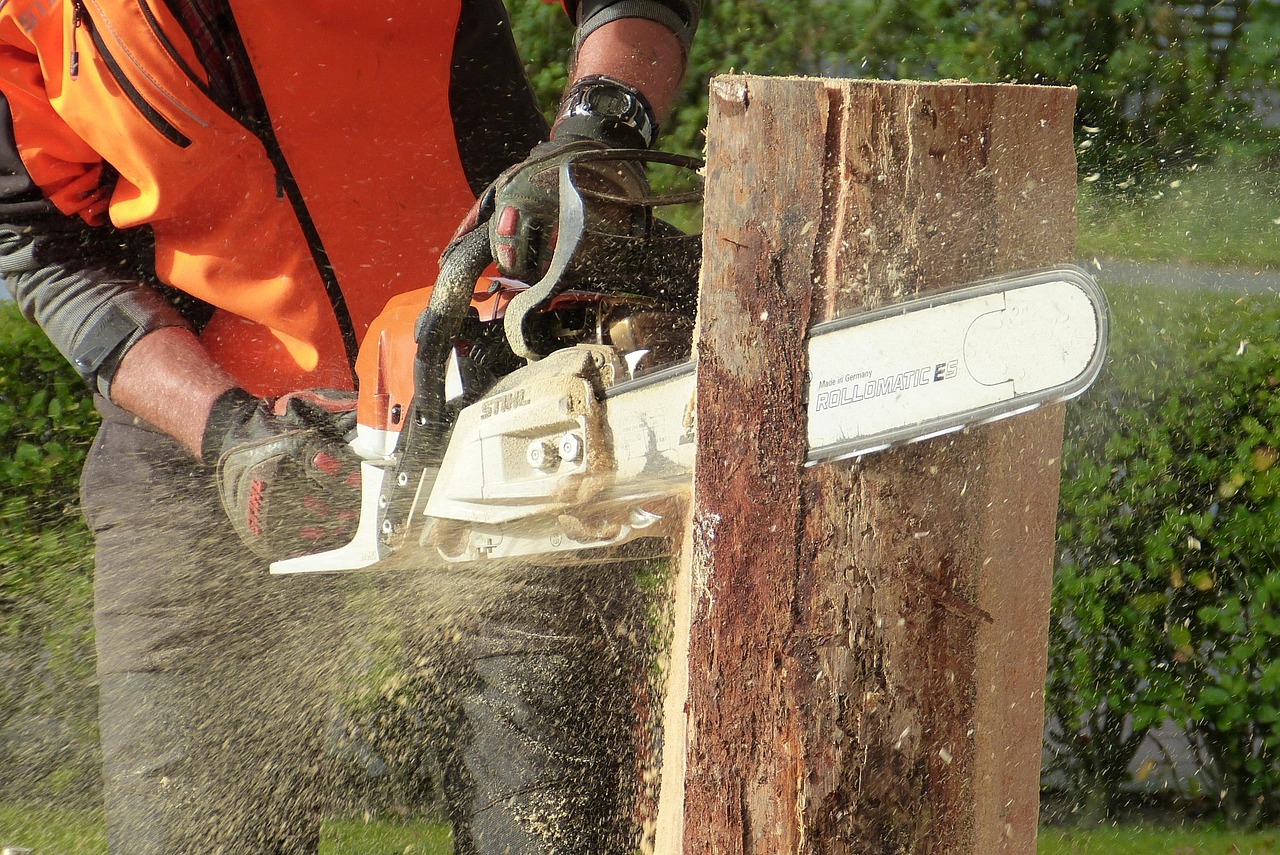Pruning banana trees is essential for promoting healthy growth, improving fruit quality, and managing the plant’s size. The process involves removing dead or damaged leaves, thinning out crowded growth, and cutting back older pseudostems to encourage new ones.
Banana trees, despite their name, are actually large herbaceous plants. They thrive in warm climates and can grow up to 30 feet tall, producing clusters of delicious fruit. Proper care and maintenance, including pruning, are crucial for keeping these plants healthy and productive. Pruning not only helps in managing the plant’s size but also ensures that it has enough sunlight and air circulation. This can prevent diseases and enhance overall growth.

Understanding the right time and techniques for pruning banana trees can make a significant difference in your gardening efforts. This guide will walk you through the necessary steps for successfully pruning your banana trees at home or in your garden.
Understanding Banana Tree Growth
Before diving into the pruning process, it is essential to understand how banana trees grow. These plants have a unique structure and lifecycle that influences their care. Here are some key points to consider:
- Banana plants produce a pseudostem made up of tightly packed leaf bases.
- They typically grow new leaves throughout the growing season.
- After flowering, the mother plant will produce fruit and then die back, allowing new shoots to emerge from the base.
Knowing this growth cycle is vital for effective pruning. It helps gardeners identify which parts of the plant need attention and when is the best time to perform these tasks.

When to Prune Banana Trees
The timing of pruning is crucial for the health of your banana trees. The best time to prune is after the fruit has been harvested and before new growth begins in the spring. This timing allows the plant to conserve energy for producing new shoots and prevents stress during fruit development.
It is also important to avoid pruning during extreme weather conditions, such as heavy rain or frost, as this can harm the plant. Regular observation will help you determine the right moment for pruning based on your local climate.
Essential Pruning Tools
Having the right tools makes the pruning process easier and more efficient. Here are some essential tools you will need:

- Sharp Pruning Shears: Ideal for cutting smaller leaves and stems.
- Loppers: Useful for thicker stems that require more strength to cut through.
- Gloves: Protect your hands from sharp edges and dirt.
- Disinfectant: Keep tools clean to prevent spreading diseases between plants.
Using clean, sharp tools ensures clean cuts, which helps reduce the chance of infection in your banana plants.
Pruning Steps for Banana Trees
Now that you understand when to prune and what tools to use, follow these steps for effective banana tree pruning:
- Assess the Plant: Examine your banana tree for any dead or damaged leaves. Look for any overcrowded areas that may need thinning.
- Remove Dead Leaves: Start by cutting off any brown or yellow leaves at their base. This helps improve air circulation and reduces disease risk.
- Thin Out Crowded Growth: If you see multiple pseudostems (suckers), choose the strongest one to keep. Cut away the weaker suckers at ground level.
- Cull Old Pseudostems: After harvesting, cut back the old pseudostems to ground level. This encourages new growth and fruit production.
- Clean Up: Remove all cuttings and debris from around the plant to prevent pests and diseases.
Following these steps will help maintain the health of your banana trees and promote fruitful yields. Remember to regularly monitor your plants throughout the growing season to keep them in optimal condition.

Additional Care After Pruning
After pruning, it is important to provide additional care to your banana trees. Here are some tips to ensure they recover well:
- Watering: Ensure that your banana plants receive adequate water after pruning. This supports new growth.
- Nourishment: Consider applying a balanced fertilizer to encourage strong regrowth.
- Pest Control: Keep an eye out for pests that may take advantage of newly exposed areas on the plant.
By following these additional care tips, you can help your banana trees thrive after pruning. Consistent attention will lead to better health and productivity in your banana garden.
Common Problems and Solutions in Banana Tree Pruning
While pruning banana trees is a straightforward process, gardeners may encounter common challenges. Understanding these issues can help you address them effectively. Here are some typical problems and their solutions:
- Infectious Diseases: Fungal infections can occur if tools are not sanitized. Always clean your tools before and after use.
- Over-Pruning: Removing too many leaves can stress the plant. Make sure to leave enough healthy foliage for photosynthesis.
- Timing Issues: Pruning at the wrong time can impact fruit production. Stick to the recommended times for pruning.
- Pest Infestation: New growth can attract pests. Regular inspections and treatments can mitigate this risk.
Being aware of these potential problems allows you to take proactive measures, ensuring your banana trees remain healthy and fruitful.
Advanced Pruning Techniques for Experienced Gardeners
For those who have some experience with banana tree care, advanced pruning techniques can enhance growth and fruit yield. These techniques include:
Crown Thinning
Crown thinning involves selectively removing leaves from the top of the plant. This technique allows more sunlight to reach the inner leaves and improves air circulation. To perform crown thinning:
- Identify the older, larger leaves that are shading younger growth.
- Carefully cut these leaves at their base without damaging the surrounding healthy leaves.
- Aim to maintain a balance between old and new leaves to support overall growth.
Sucker Management
Banana plants produce suckers, which can compete with the main plant for nutrients. Managing suckers is essential for optimal growth:
- Leave One or Two Strong Suckers: Maintain a couple of strong suckers while removing weaker ones.
- Use Suckers for Propagation: If you have extra suckers, consider transplanting them to start new plants.
Fertilization After Pruning
After pruning, fertilization plays a crucial role in encouraging new growth and improving fruit quality. Here are guidelines for fertilizing banana trees:
Choosing the Right Fertilizer
Select a balanced fertilizer that contains equal parts nitrogen (N), phosphorus (P), and potassium (K). A ratio like 10-10-10 or 14-14-14 is ideal. Here’s what each nutrient does:
| Nutrient | Function |
|---|---|
| Nitrogen (N) | Promotes leaf growth and overall plant health. |
| Phosphorus (P) | Supports root development and flowering. |
| Potassium (K) | Aids in fruit development and disease resistance. |
Application Timing
Apply fertilizer shortly after pruning to give your banana trees the necessary nutrients for recovery. Follow these steps for application:
- Water the base of the plant before applying fertilizer to prevent root burn.
- Sparsely sprinkle the fertilizer around the base of the plant, avoiding direct contact with the stem.
- Water again to help the nutrients penetrate the soil.
Mulching for Better Growth
Mulching is another beneficial practice after pruning. It helps retain moisture, suppress weeds, and regulate soil temperature. Here’s how to effectively mulch your banana trees:
- Select Appropriate Mulch: Use organic materials such as straw, wood chips, or dried leaves.
- Apply Mulch Evenly: Spread a layer of mulch about 2 to 4 inches thick around the base of the plant, keeping it away from the stem.
- Refresh Mulch Regularly: Add new mulch as needed to maintain thickness and effectiveness.
Implementing these practices will create a healthier growing environment for your banana trees, ultimately leading to better yields and improved overall plant health.
Pest Management Strategies
Pests can pose a significant threat to banana trees, especially after pruning when new growth is vulnerable. Effective pest management is crucial for maintaining plant health. Here are some strategies:
Identifying Common Pests
Several pests are known to affect banana plants, including:
- Banana Weevils: These pests bore into the pseudostems, weakening the plant.
- Aphids: Small insects that feed on sap, leading to stunted growth.
- Spider Mites: These tiny pests can cause leaf discoloration and damage.
Pest Control Methods
You can manage pests through various methods:
- Cultural Controls: Maintain good garden hygiene by removing debris and dead leaves that attract pests.
- Biological Controls: Introduce beneficial insects, such as ladybugs or lacewings, which prey on harmful pests.
- Chemical Controls: If necessary, use insecticidal soaps or organic pesticides targeted at specific pests.
Regular monitoring and timely interventions will help keep your banana trees safe from pest infestations, ensuring strong growth and fruitful harvests.
Seasonal Care for Banana Trees
In addition to regular pruning and pest management, understanding seasonal care is crucial for the health of banana trees. Each season presents unique challenges and opportunities for nurturing your plants. Below, we explore how to care for banana trees throughout the year.
Spring Care
Spring is a vital time for banana trees as they awaken from dormancy. Here are some essential tasks to undertake during this season:
- Inspect for Damage: Check for any winter damage to leaves or pseudostems. Remove any dead or damaged parts promptly.
- Fertilizing: Apply a balanced fertilizer as new growth begins. This supports robust leaf and pseudostem development.
- Watering: Ensure consistent moisture as temperatures rise. Water deeply but avoid waterlogging.
Summer Care
During summer, banana trees thrive and grow rapidly. Proper management during this time ensures a bountiful harvest:
- Regular Pruning: Continue monitoring the plant’s growth. Prune any dead leaves regularly and manage suckers effectively.
- Irrigation Needs: Maintain adequate moisture levels, especially during hot spells. Consider using mulch to conserve soil moisture.
- Pest Monitoring: Keep a close eye on pests, as they can proliferate in warmer weather. Implement control measures as needed.
Fall Care
As the growing season begins to wind down, fall presents its own set of care requirements:
- Harvesting: Collect ripe bananas before the first frost. Ensure you handle the fruit carefully to avoid bruising.
- Final Pruning: After harvesting, prune away any spent leaves and old pseudostems to prepare the plant for winter.
- Soil Preparation: Consider amending the soil with organic matter or compost to improve nutrient availability for the next growing season.
Winter Care
In regions where temperatures drop significantly, providing proper winter care is essential:
- Protection from Frost: If frost is a concern, cover your banana trees with frost cloth or burlap on cold nights.
- Mulching: Apply a thicker layer of mulch around the base of the plant to insulate roots against cold temperatures.
- Reduce Watering: As growth slows, reduce watering to avoid root rot. Monitor the soil moisture closely.
Soil Requirements for Banana Trees
The health of banana trees greatly depends on soil quality and composition. Understanding their soil requirements can lead to healthier plants and better yields.
Soil Type
Banana trees prefer well-draining, loamy soil rich in organic matter. The ideal pH range is between 5.5 and 7.0. Here are some soil types to consider:
- Sandy Loam: Provides excellent drainage while retaining moisture and nutrients.
- Silty Soil: Holds nutrients well but may require amendments to improve drainage.
- Clay Soil: Can retain water but often needs aeration and organic matter to prevent compaction.
Nutrient Requirements
The following nutrients are essential for healthy banana tree growth:
- Nitrogen: Vital for leaf growth and overall plant vigor.
- Phosphorus: Important for root development and flowering.
- Potassium: Enhances fruit quality and disease resistance.
| Nutrient | Source | Function |
|---|---|---|
| Nitrogen (N) | Urea, Blood Meal | Supports leafy growth and lush foliage. |
| Phosphorus (P) | Bone Meal, Rock Phosphate | Aids in strong root systems and flowering. |
| Potassium (K) | Kelp Meal, Wood Ash | Promotes fruit development and stress tolerance. |
Propagation Techniques for Banana Trees
If you want to expand your banana garden, understanding propagation techniques is essential. Here are common methods used for propagating banana trees:
Sucker Division
Sucker division is the most common method. To propagate using suckers:
- Select healthy suckers that are at least 3 feet tall and have roots.
- Carefully dig around the sucker to avoid damaging the roots.
- Cut the sucker away from the mother plant with a sharp knife.
- Transplant it immediately into a prepared hole in your desired location.
Corm Division
Corm division is another effective method, particularly for established plants:
- Dig up the corm after the mother plant has fruited and died back.
- Separate the corms using clean tools, ensuring each piece has at least one growing bud.
- Replant the corms in a suitable location at the same depth they were previously growing.
These propagation techniques allow you to multiply your banana plants effectively, ensuring a continuous supply of fresh fruit for your garden.
Environmental Factors Affecting Banana Tree Growth
In addition to proper pruning and care techniques, environmental factors play a significant role in the growth and productivity of banana trees. Understanding these factors can help you create an ideal growing environment for your plants.
Climate Considerations
Banana trees thrive in warm, tropical climates. Here are some climate considerations to keep in mind:
- Temperature: Ideal temperatures range from 75°F to 95°F. Extreme cold can damage the plant, while excessive heat without adequate moisture can stress it.
- Humidity: Banana trees prefer high humidity levels, ideally between 50% and 70%. Dry conditions can lead to leaf curling and reduced fruit quality.
- Rainfall: Regular rainfall or irrigation is necessary. Banana trees require at least 40 inches of rainfall annually for optimal growth.
Sunlight Requirements
Sunlight is crucial for the healthy growth of banana trees. These plants thrive in full sun, which means they should receive at least six hours of direct sunlight each day. Here are some tips for ensuring adequate sunlight:
- Site Selection: Choose a planting location that is not shaded by buildings or other plants.
- Spacing: Ensure proper spacing between plants to prevent overcrowding and allow sunlight to reach all parts of the tree.
Common Banana Tree Varieties
There are several varieties of banana trees, each with unique characteristics and growing requirements. Here are some popular varieties:
- Cavendish: The most widely grown variety, known for its sweet flavor and resistance to disease.
- Dwarf Brazilian: A compact variety that produces sweet bananas and is suitable for smaller gardens.
- Red Dacca: Known for its reddish-purple skin and slightly tangy flavor, this variety is popular in tropical regions.
- Apple Banana: This variety has a sweet, apple-like flavor and is often used in desserts.
Selecting the right variety for your climate and soil conditions can significantly impact your success in growing bananas. Be sure to research which varieties thrive best in your area.
Enhancing Banana Tree Production
If you want to maximize your banana tree production, consider implementing the following strategies:
- Crop Rotation: Practice crop rotation with other plants to maintain soil fertility and reduce pest buildup.
- Irrigation Systems: Install a drip irrigation system to ensure consistent moisture without overwatering.
- Organic Matter Addition: Regularly add organic matter, such as compost or well-rotted manure, to improve soil structure and nutrient content.
These strategies will help create a robust growing environment that encourages healthy plants and abundant fruit production.
Final Thoughts
Caring for banana trees involves more than just pruning; it requires a holistic approach that includes understanding growth cycles, environmental needs, and pest management. From selecting the appropriate tools to implementing seasonal care routines, each step plays a crucial role in the health and productivity of your banana plants.
By following the outlined pruning steps, maintaining proper care throughout the seasons, and being aware of environmental factors, you can ensure that your banana trees flourish. Whether you are a novice gardener or an experienced horticulturist, these practices will help you achieve a thriving banana garden.
The joy of harvesting fresh bananas from your garden is immensely rewarding. With dedication and attention to detail, you can enjoy the fruits of your labor while contributing to a sustainable gardening practice. Happy gardening!
